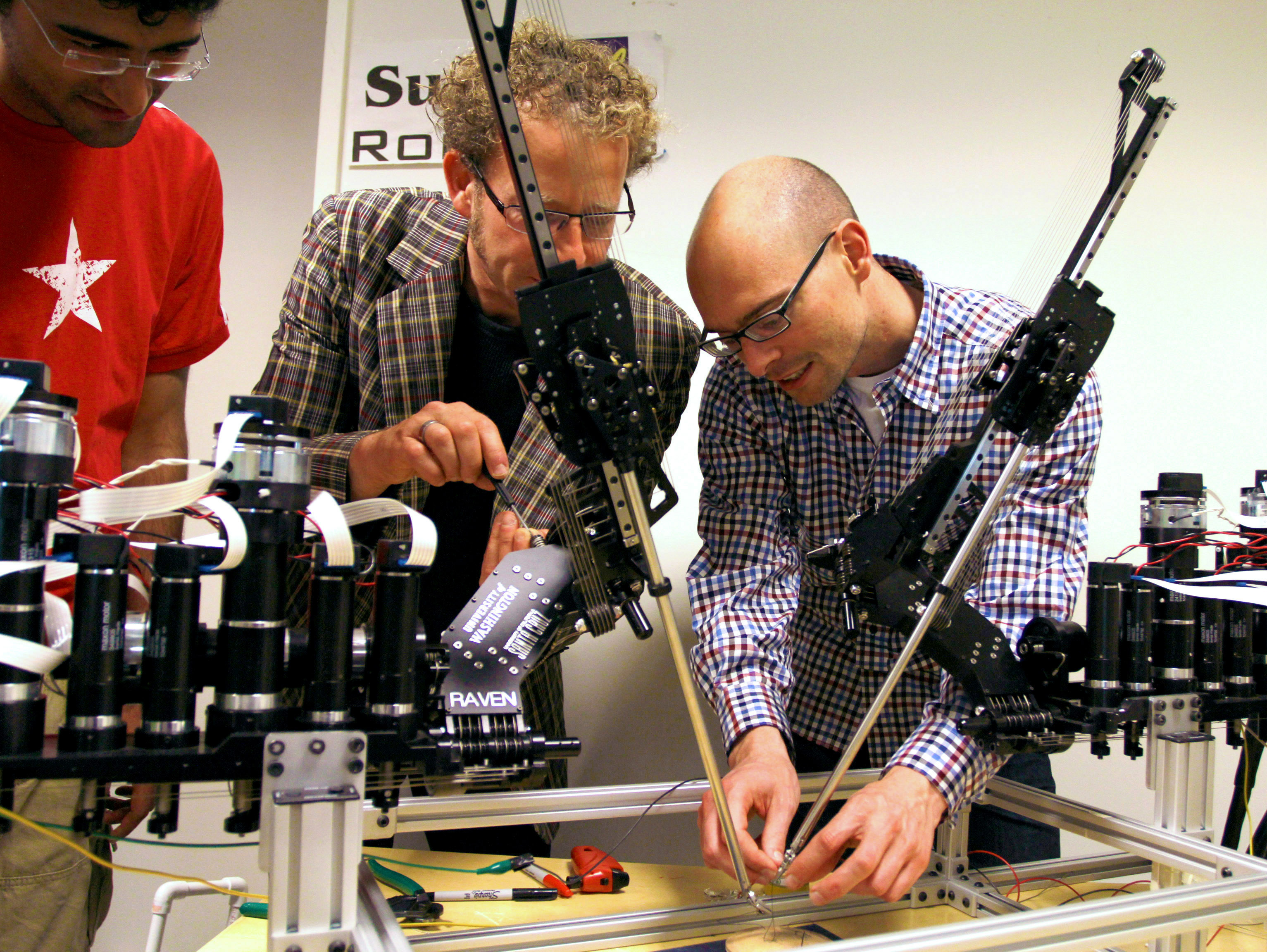
UC Berkeley professors Ken Goldberg (left) and Pieter Abbeel work with the Raven surgical robot
What is the Raven?
The Raven is an open-architecture surgical robot for laparoscopic surgery research from Applied Dexterity. It has two cable-driven 7 DOF arms (6 DOF + grasp). It is intended to facilitate collaborative research on advances in surgical robot.
Vision and Goals
Robotic surgical assistants (RSAs) enable surgeons to perform delicate and precise minimally-invasive surgery. Introducing autonomy of surgical sub-tasks has the potential to assist surgeons, reduce fatigue, and facilitate supervised autonomy for remote tele-surgery. Autonomous execution of surgical sub-tasks is challenging. Many surgical robotics, such as the da Vinci and the Raven, have 6 DOF per arm (plus a grasp DOF), so there is no joint redundancy. Also, each arm must enter the body through a port that constrains the motion at that point akin to a spherical joint. These constraints, combined with a very limited workspace, make for a particularly challenging robotic manipulation setting.
Uncertainty in the Raven
The primary difficulty in using the Raven for autonomous operation is state estimation. The joints do not have encoders on them; instead, measurements of the joint angles can only be taken from encoders mounted on the motors (i.e., the cable capstans) but not on the joints. The joints on the arms are connected to motors at the base using up to four meters of small-gauge cable, and the cables are coupled through multiple joints, so the motor measurements do not reflect the slack or stretch in cables that affect the joint angles. As a result, even a small amount of slack or stretch in the cables can greatly increase the uncertainty in gripper pose.